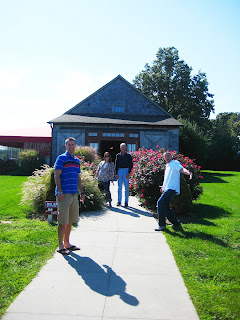The other week I signed up for my first adult continuing education class held at Commack High School
Photo: Back to class
I was a hard-working student and excelled in all these classes. But looking back now, I realize how much was left out of my and my classmates’ high school science education. So many basic questions remained unanswered such as, Where does our food come from? Where does our water come from? How do you plant a tree? What used to be on Long Island before strip malls and subdivisions? I don’t mean to be overcritical of my high school (which is a School of Excellence
What makes a fruit a fruit? A fruit is the part of a flowering plant that houses the plant’s seeds. Botanically speaking, the fruit is the part of a plant that develops from the ovary. After the eggs are fertilized inside the ovary, they develop into seeds and the fruit ripens. In common, everyday language, fruits must be sweet, but in the botanical definition, they do not have to be. So pumpkins, corn, tomatoes, and chili peppers are all really fruits because they are flowering plants (not all plants are flowering) and they enclose the seeds of the plant.
Photo: Eible, but not sweet - Red Chokecherry
Photo: Eible, but not sweet - Red Chokecherry
Many fruits are edible because it is the plant’s tricky way of enticing people and other plant eaters to ingest the fruit and disperse its seeds. Why does a plant want to disperse its seeds? Because if all the seeds fell in one place and started growing beneath the mother plant, there would not be enough water, sunlight and nutrients for all of them. And, of course, the plant wants to produce as many baby plants as possible. Some plants use other tactics to disperse their seeds like wind, water, or being sticky and being carried on the fur of animals. The seeds, not the fruits, are what give rise to other plants. So plant some seeds in your yard in the spring and see what happens.
Photo: Surprisingly edible - Kousa Dogwood fruits
As I tried to navigate the maze of Commack H.S. the other night, I walked past posters for student clubs, student-painted murals, and athletic department trophy cases. I hoped that these students were already learning answers to basic science questions and that our schools are teaching them the foundation for a sustainable and “green” future.








